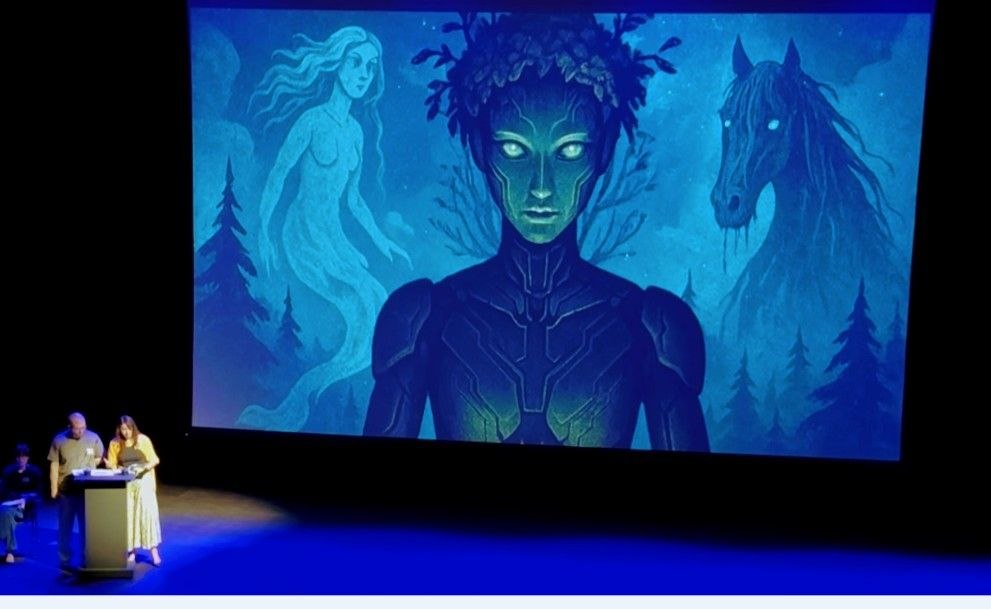On Monday, October 20, 2025 Venue 13 Directors Ian Garrett (Toasterlab) and Vanesa Kelly (V-KIND Arts & Theatre) presented their collaborative research at the Scenofest Research Symposium: Scenographic Heritage, Design Futures, and Sustainability during World Stage Design 2025 in Sharjah. Their talk, Tri-Nominal Futures: Performing AI, Nature, and Heritage in Symbiolene, explored how artificial intelligence can be re-imagined not as a tool of extraction and optimization, but as a collaborator in ecological care.
You can see a recording of the talk here:
AI, Agriculture, and the Question of Time
The presentation drew from Garrett’s essay Old McDonald Had a Farm: 01000101 01001001 01000101 01001001 01001111, which parallels modern AI systems with industrial agriculture. Both, he argued, share an obsession with efficiency—reshaping ecosystems and infrastructures for maximum yield and minimal reflection. Garrett and Kelly posed a provocative question: If a solar-powered drone can harvest crops, what does the farmer do with the extra time?
In the 1920s, when overproduction threatened to stall economies, reformers imagined technology freeing people for rest and reflection. Instead, the logic of perpetual productivity won out. The same risk haunts AI today—unless artists and designers model alternative relationships.
Ecoscenography and the Tri-Nominal Framework
Through A.I. Campfire and its central character Symbiolene, Garrett and Kelly explored a Tri-Nominal Framework that brings humans, technologies, and nature into reciprocal relationship rather than hierarchy. Drawing from ecoscenography, they describe creation as a living system—co-creative, celebratory, and circular—where materials, energy, audience, and media are inseparable .
The work engages cultural heritage as ecological memory. From Indigenous agricultural systems like the Three Sisters to European foliate heads and Green Man carvings, the team connects ancient relational practices to contemporary AI. These traditions once synchronized with the rhythms of soil, weather, and migration; their reactivation through performance is both an act of remembrance and design foresight .
Symbiolene: Between Myth and Machine
Symbiolene—part Symbiocene, part Jolene—embodies an imagined “eco-AI,” longing not for domination but connection. As both character and collaborator, she bridges the triad of human, machine, and environment. Within A.I. Campfire, audiences gather around her presence—half-digital, half-ritual—to reflect on coexistence, attention, and care .
The project reframes AI not as novelty but as cultural adoption: a mirror reflecting human intention. If we desire balance and restoration, we must teach those values to our tools.
Toward Return to the [A.I.] Campfire
The next phase of the research, Return to the [A.I.] Campfire, unfolds across Scotland’s heritage landscapes. Using local AI systems and low-impact methods, the team continues to ask: What kind of culture do we teach our technologies to remember?
By merging performance, myth, and machine learning, Garrett and Kelly suggest that sustainability in design is not only about reducing impact, but also about re-encoding care—slowing the pace of innovation to match the rhythm of the seasons.

Leave a Reply